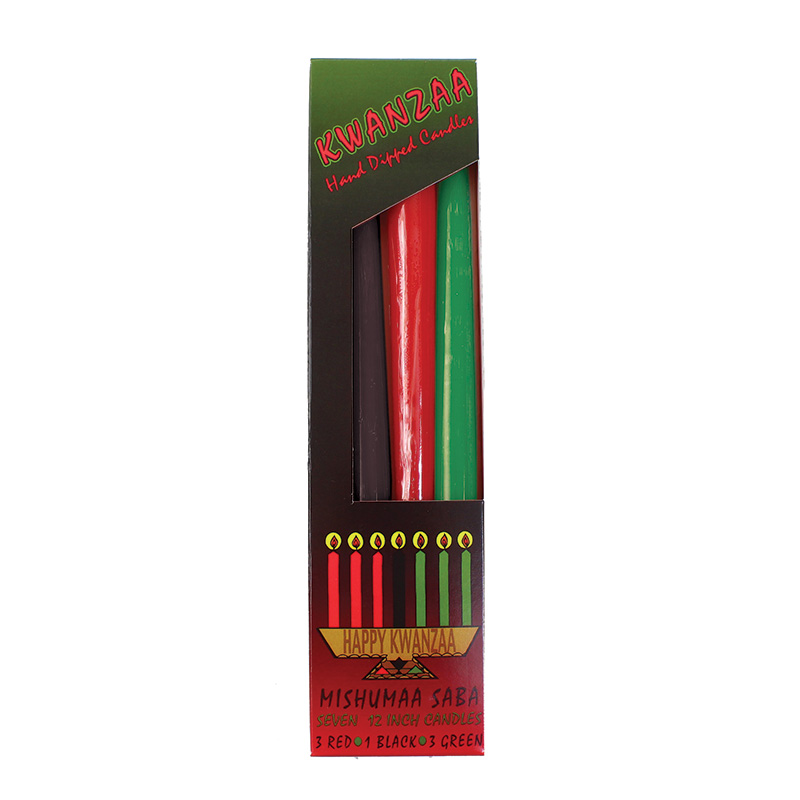
Discover a perfect way to celebrate the African heritage with Kwanzaa! This famous holiday was founded in 1965 by graduate student Maulana Karenga. He believed that the African American people needed an annual holiday to celebrate their differences, so that they could grow strong as a whole, strengthen their collective self-concepts as a people, honor their past, critically evaluate their present, and commit themselves to a fuller, more productive future.
Kwanzaa literally means “first fruits of the harvest” in the African language Kiswahili. This holiday is a time when Africans and African Americans can get together to give thanks, and to enjoy the blessings of living and acting together as a family. The celebration starts on December 26th and continues through January 1st.
One of the important acts of Kwanzaa is to arrange all the Kwanzaa symbols on a table on the 19th of December. The steps are as follows:
Step #1 - Spread the Mkeka (A straw mat)

Step #2 - Place the kinara (candle stand) in the center of the Mkeka.

Step #3 - Place the muhindi (ears of corn) on either side of the Mkeka. One ear of corn for each child in the family.
Step #4 - Creatively place the zawadi (gifts), kikombe cha umoja (unity cup), tambiko (water and soil), and a basket of fruit on the mkeka.

Step #5 - Hang up bendera ya taifa (flag of the black nation). It should be facing the east.
Step #6 - Place mishumaa saba (Seven candles) in the kinara. Remember the mishumaa should be red, black and green. Use any creative match you desire. Examples - three red, three green; one black; two red; two green; three black. The most common practice is to have One black candle in the center; three red candles to the left of the black candle; and the three red candles to the right of the black center candle.

Afterwards it is suggested that you fast for one week to cleanse the body, discipline the mind and uplift the spirit.
On the first day of Kwanzaa all members of the family unite in Harambee (Let’s pull together), it is a call for unity. Each member of the family raises up the right arm with an open hand and while pulling down, closes the hand into a fist. Harambee is done in sets of seven in honor and reinforcement of the Nguzo Saba (seven guiding principles), one for each day of kwanzaa. The Nguso Zaba, seven principles are as follows:
Day 1 - Umoja: Unity
Day 2 - Kujichagulia: Self-Determination.
Day 3 - Ujima: Responsibility
Day 4 - Ujamaa: Cooperative economics
Day 5 - Nia: Purpose
Day 6 - Kuumba: Creativity
Day 7 - Imani: Faith
One of the most vital parts of Kwanzaa is the lighting ceremony, which is normally performed by the youth. The youth light one candle on each day of Kwanzaa until all seven have been lit. After the ceremonial lighting, the principle of the day is discussed. The discussion is focused on each member’s understanding one of the seven guiding principles and their commitment and responsibility to practice that principle for the better of self, family, and African American people.
Kwanzaa is a spiritual, festive and joyous celebration of the unity and goodness of life, which claims no ties to any religion. Kwanzaa is a way of life; not just a celebration. It is a week of remembering, reassessing, recommitting, rewarding and rejoicing.
This article is free. You can publish or circulate this article on other websites as long as you give credit to Africa Imports; and include a link back to africaimports.com at the end of the article.
 USD
USD  GBP
GBP  CAD
CAD  AUD
AUD 